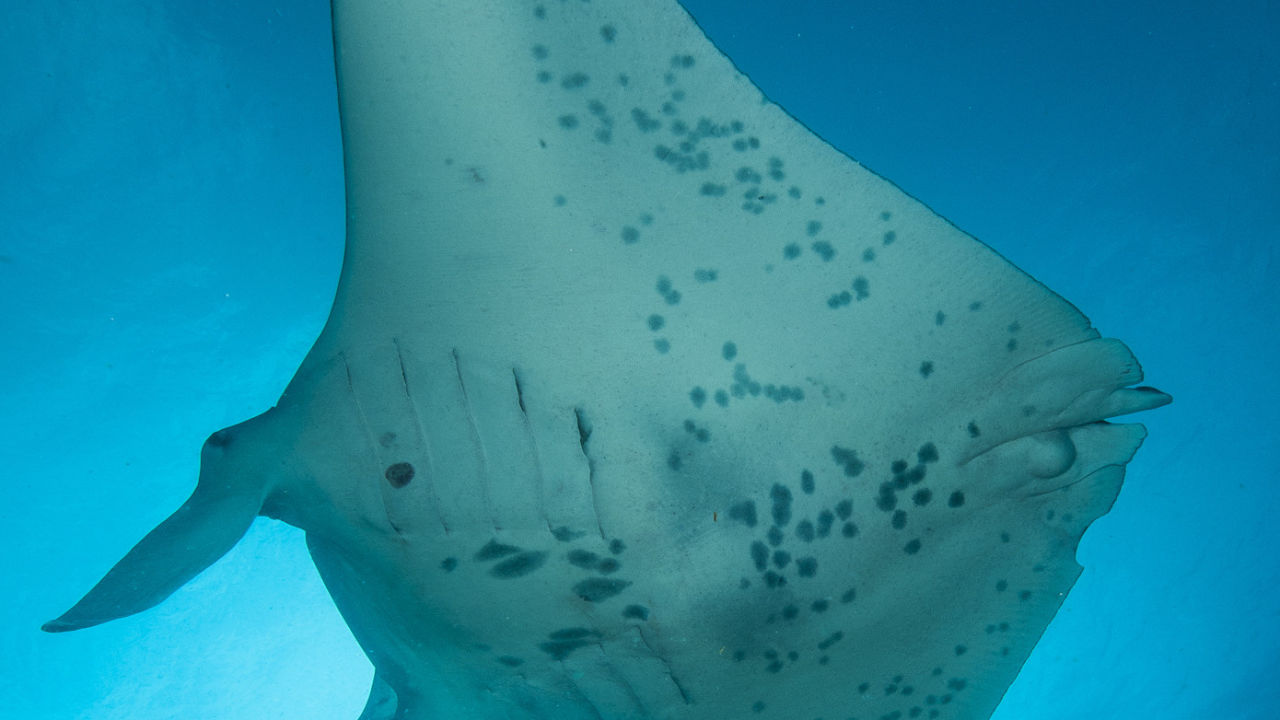News ·
Five fascinating facts about manta rays
Our irreplaceable Reef is home to thousands of incredible species and manta rays are no exception. Highly intelligent, social creatures often spotted in the tropical waters of the Great Barrier Reef, manta rays have a curious and sometimes playful nature, making them popular among divers.

We’re only beginning to fully understand the crucial role these gentle giants play in our coral reef ecosystems. A recent study by the Save Our Seas Foundation found mantas travel regularly between coral reefs and the deep ocean, where they eat a certain type of zooplankton. When they return to the reef, their waste acts as a fertiliser, providing the coral with nutrients not found in the surrounding areas. This helps the coral grow and can play a role in maintaining healthy coral reefs.
Here are five more fascinating facts about these unique creatures:
1. 'Manta' means cloak in Spanish
The name describes their wing-like pectoral fins which they flap to glide gracefully through the water. Manta rays also have two fins that protrude from their head, which have earned them the nickname “devil fish”.
2. Mantas are amongst the largest, and smartest, fish in the ocean
Weighing up to two tonnes with a wingspan of up to seven metres, mantas have the biggest brains of all fish and are particularly good at problem-solving and communicating. Unlike their stingray cousins, they have no venomous tail spines and are harmless to humans.
3. Mantas love to play with their food
Feeding on krill and zooplankton, they are often seen forming long chains and swimming in circles to create a spiral effect, catching food in their wake. Chain feeding is one of the rarer sights on the Reef, captured here on Lady Elliot Island.
4. Mantas are particular about hygiene
Regular stops at Reef “cleaning stations” are a must for mantas. These special spots on the Reef are generally run by smaller wrasse, which clean dead skin and parasites off the bodies of visiting animals. Mantas will wait patiently for an hour while these cleaners go to work, often returning to the same location time and time again.
5. Mantas are all unique
The natural spot pattern on their underside is unique to each individual, much like a person’s fingerprint. Researchers use these markings to track individuals’ movements.
Like many marine creatures, manta rays are listed as vulnerable which means their population is declining.
As well as rising water temperatures and poorer water quality from sediment run-off, overfishing is threatening this species’ survival. Their long lifespan and slow reproduction rate means overfished populations struggle to recover properly.
Together with our partners, we’re working hard to improve water quality on the Reef and protect and restore critical island habitats to save vulnerable species.
Right now, we’re delivering more than 100 Reef-saving projects to save our Reef and its marine life, including manta rays, for generations to come.




